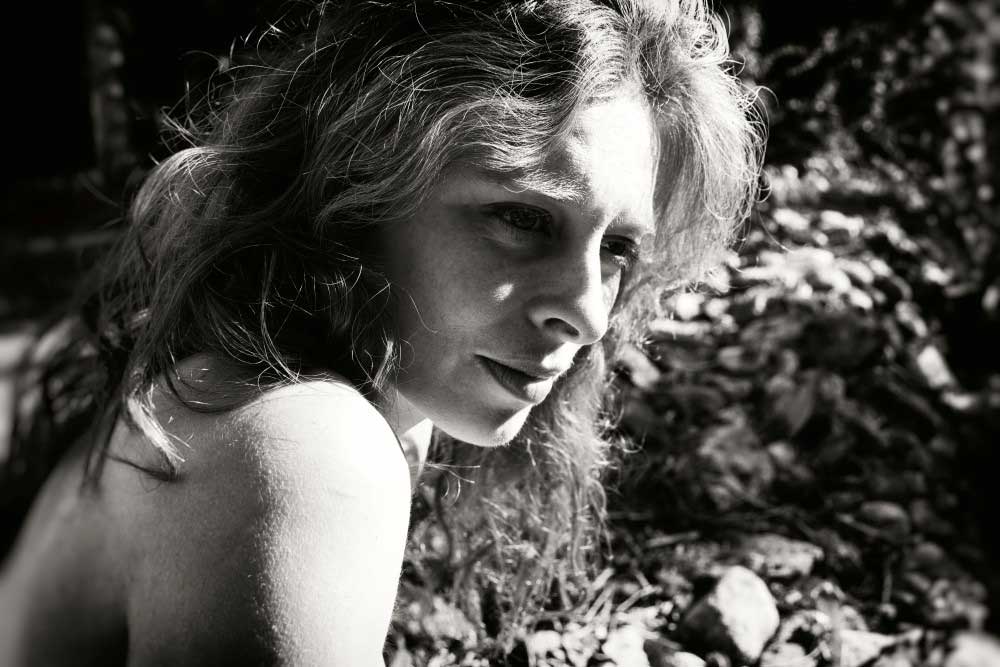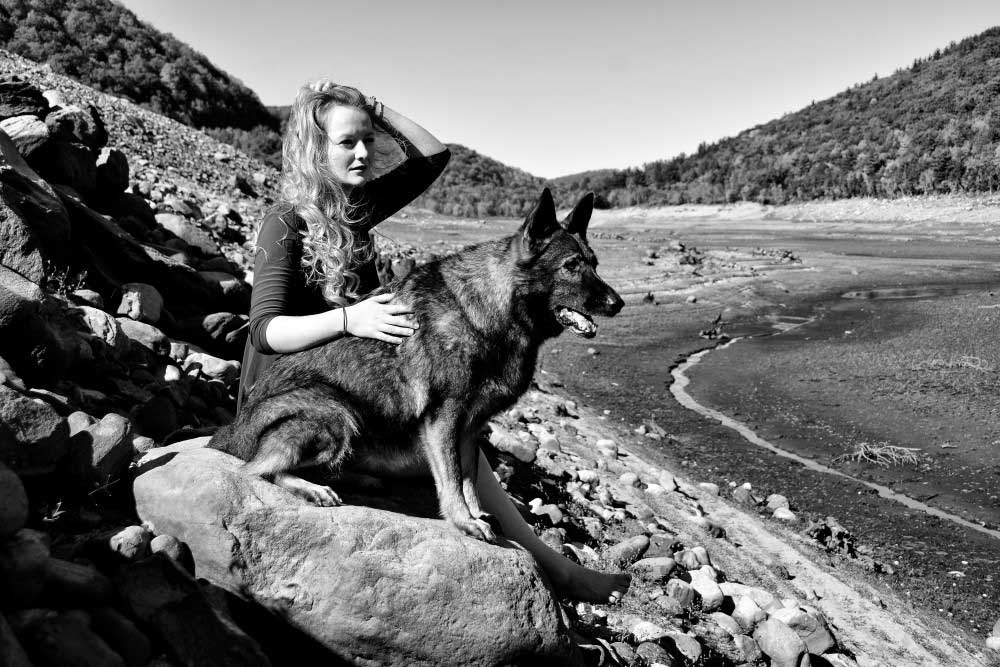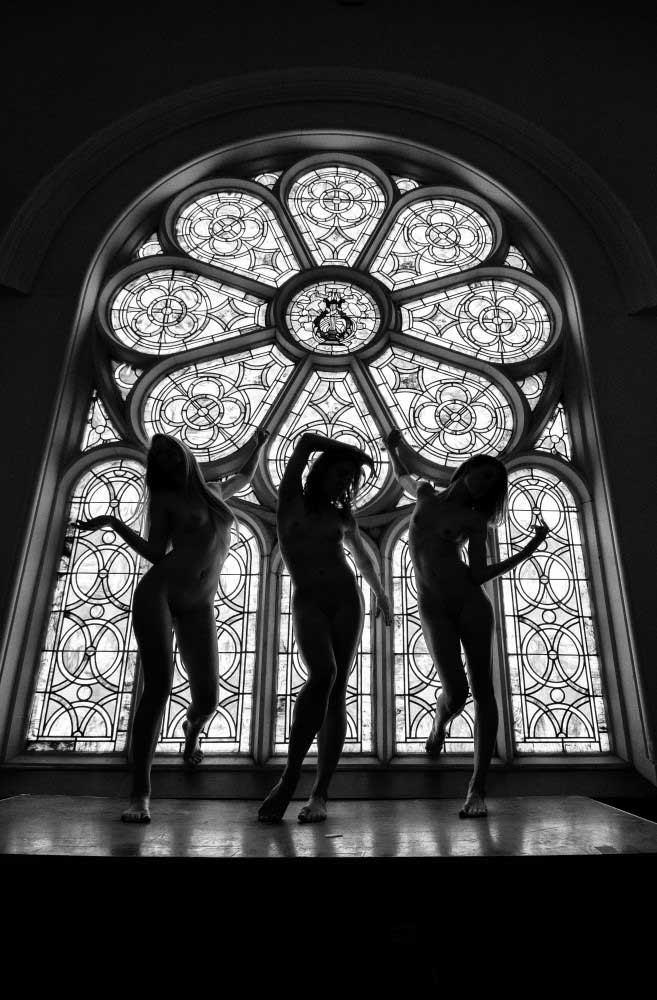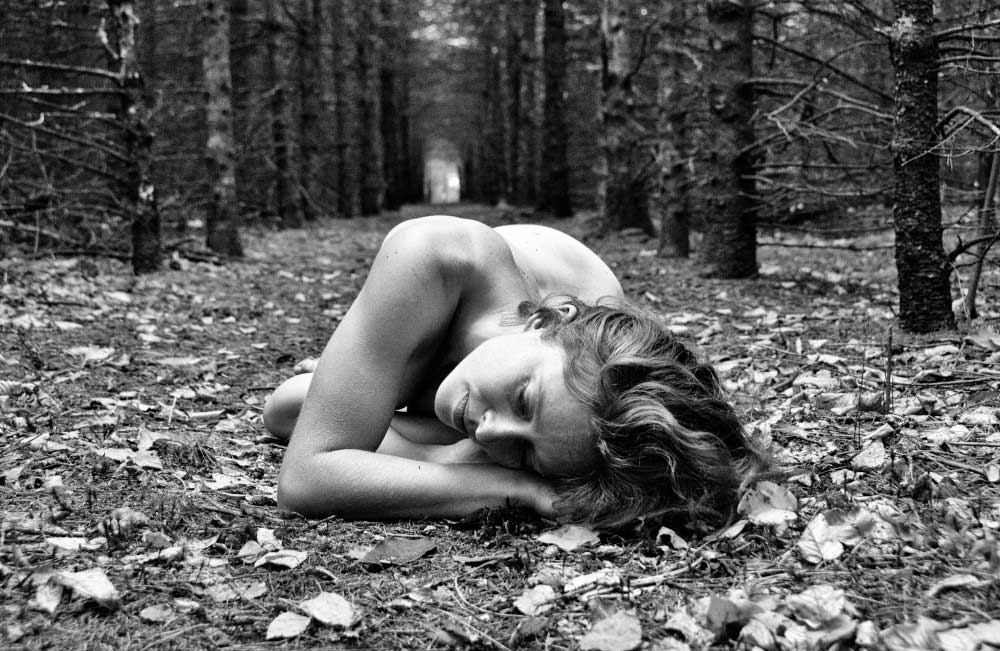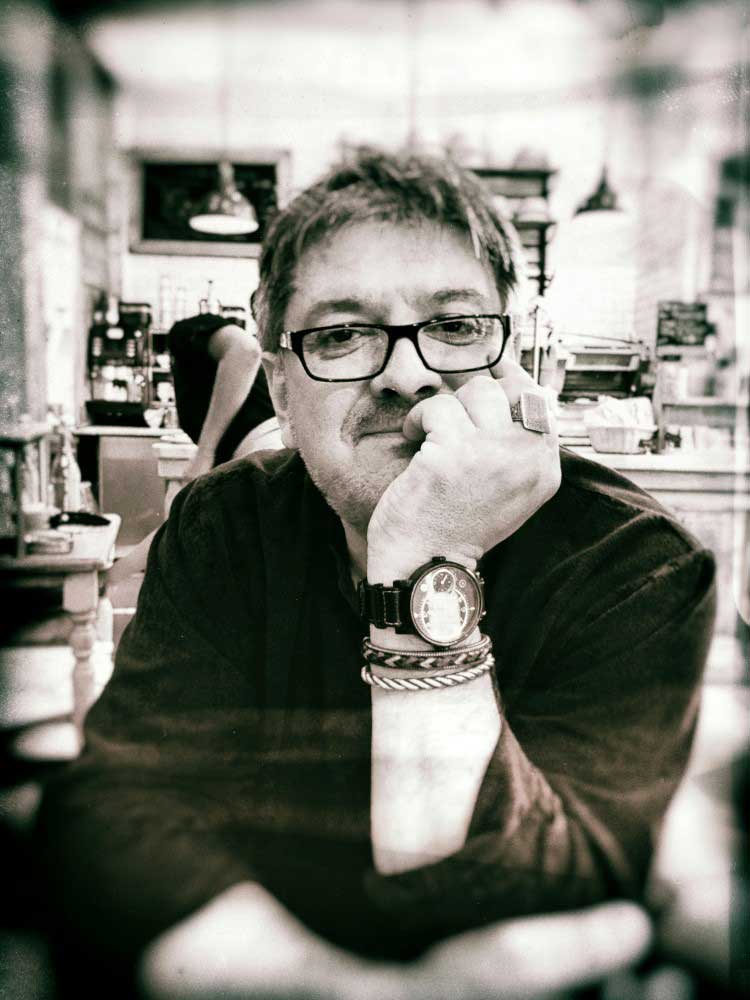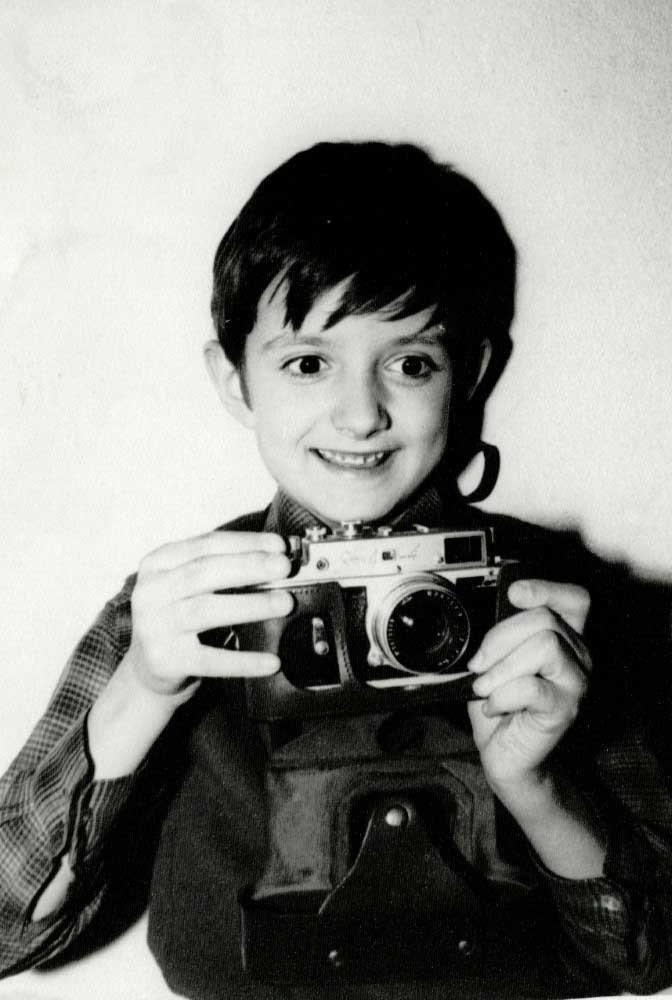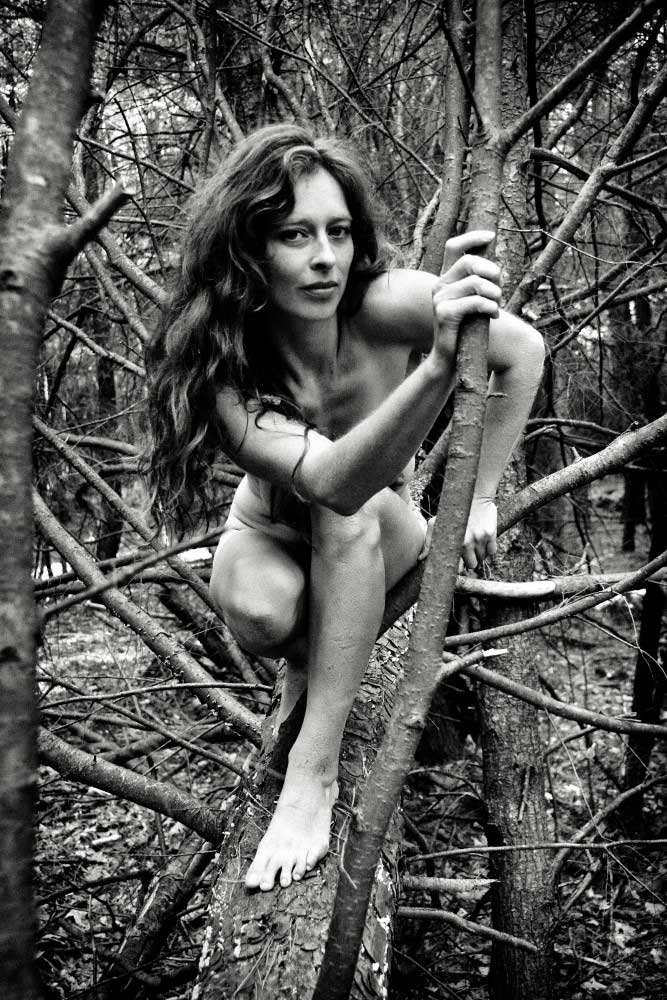Florin Ion Firimitã is a visual artist, educator, and novelist who traces his interest in art back to his mother’s passion for drawing and his father’s modest amateur photo lab, in Bucharest, Romania, where he was entrusted with mixing chemicals, developing film and printing black-and-white photos at the age of six.
Versatile in a variety of mediums, from painting to mixed media and from writing to photography, the artist has continued to explore a wide range of creative expressions. [Official Website]
Can you tell us a little about yourself?
I was born in Bucharest, Romania, where I grew up during the original Cold War. I had a very happy childhood until some of the most important people in my life died. My grandmother; my favorite teacher, my father, my mother – all vanished within a few years. That produced a shift in my sensibilities, I think. I grew up as an orphan – enough material in there for ten Dickens novels. Being an orphan forces you to see. You pay a little more attention. Your wounds stay open a little longer. The idea of loss has been present in my mind and my work ever since. A few years ago I even wanted to write a book called “Mortality for Beginners,” a children’s book about death and loss – the type of guide I wish I had when I was younger. I am sure that one of the reason today I take photographs of people – because I need to connect, to rewind the past, to un-orphan myself.
As a teenager, I was angry and depressed. I held a string of jobs: janitor, night guard, welder, store clerk, etc. In 1989 I participated in the so-called “Revolution” in Bucharest. I was a lousy revolutionary because I never believed that violence could achieve anything. I also didn’t realize I was in the center of some of the most important historical events of the 20th Century. I wish I took more photos back then, but I was interested more in my own survival than in being a witness.
I studied studio art, worked on sets for the National Opera House in Bucharest, and in the summer of 1990 I made my way to the United States via Yugoslavia and Italy. Now I live in a quiet rural area outside New York City. I teach, exhibit, and travel. I listen to birds in my garden. Everything that happened in my life prior to 1990 seems like a surrealist movie. It’s a strange journey, from being a starving teenager to having my work on display in Paris next to some of the greatest names in the history of photography. Gad Edery, the owner of GADCOLLECTION gallery that represents my work, has just shown my photos at the Paris Fair. 700,000 visitors attended it. I am still not sure how it all happened, but I am very grateful for every moment.
How did you get interested in photography?
My father opened that magic door to me. I was very shy – today I seem more gregarious, but basically, I am just an introvert who moonlights as an extrovert. Photography is the perfect medium for someone like me.
I lived in a city of two million people but spent a lot of time in the country, where my family had a home. Nature was my third parent. I drew, I painted, and also spent a lot of time reading. From an early age I developed this strange ability to translate everything I came in contact with into a visual scenario. I remember arranging toy soldiers, Matchbox cars, and plastic buildings into elaborate miniature movie sets in the middle of my bedroom. At some point I started to reenact car crashes, pour rubbing alcohol on my constructions, and set everything on fire. My father wanted to make sure I wasn’t going to destroy the apartment, so he asked me to help him in his darkroom – an improvised lab in one of our bathrooms. I am not sure why he became interested in photography. He was able to get his supplies through the black market, and made some money on a side. We were not poor, but always on the edge of poverty. There were a lot of images taken at weddings, funerals, some portraits of his coworkers, and once, of a nudist colony. What attracted me to the whole thing was the silence of the process and the magic of bringing those images to life. He spoke very rarely with me about photography, but he showed me how to mix chemicals, how to develop film, how to manipulate the enlarger. I don’t remember him teaching me how to use a camera, but by the time I was 13 I was using both his Rolleiflex and his Exakta Varex. I also don’t remember ever taking a photography class. It was as if my father’s knowledge about the medium transferred to me via some magic umbilical cord.
Have any artist/photographer inspired your art?
For 25 years, I lived in a police state polluted by the cult of personality. That translated into the omnipresence of the Leader, and of thousands of prefabricated images Romania in the early 1980s was like an Eastern European North Korea. It was like living inside a warehouse of awful stock photographs: sanitized, boring routines, and no room for creativity. Access to information was reduced to nightly broadcasts from Radio Free Europe and Voice of America. Art history ended with Picasso.
When I came to the United States, I found amazing resources and sources of inspiration. I realized that everything was possible. In terms of specific artists: I constantly refer to Rembrandt, Man Ray, Rodin, Helmuth Newton, Jerry Uelsmann, Cartier-Bresson, Marc Lagrange, the Russian Orthodox icon painters.
Could you please tell us anything about your technique and creating process?
I am grateful that I arrived to photography from other areas that I have been passionate about. My photography is informed by other arts. What I do is a reflection of my interest in philosophy, music, literature, film, nature, and history. I find sources of inspiration in everything surrounding me: random conversations; my walks around the streets of Venice, New York City, or Paris; a Beethoven string quartet; David Lynch and Borges; a graffiti-covered wall; an old photograph found at a flea market. I make “shopping” lists of ideas. I make drawings. I kept a journal for about forty years. The entire world is my kitchen. My latest series was born out of a dream that resembled a Paul Delvaux painting. What I initially envisioned as just a handful of images, turned into three years of shooting nudes in an old bookstore and an exhibit that has traveled all the way to Paris.
Describe your ideal photographic situation
I can’t shoot under stress. In order to work I need the world around me to be balanced. I know I am asking a lot, but if a friend is experiencing a crisis two hundred miles away, it affects the way I click my shutter release button. It puts things in perspective. Lately I have been working a lot with models. I want them to be comfortable when we work together, to have a sense of our collaboration. That and fully charged batteries.
How much preparation do you put into taking a photography?
I started as someone who found “images,” but at this point I am interested more in creating/ setting up images. Next year I am going to teach a street photography workshop in Paris. I enjoy the complexities of that kind of environment, asking my students to establish a relationship with an unfamiliar space, try to tell a story through their images. It’s one way of approaching photography. Without a doubt, there is a certain poetry in street photography, but where do you go after Cartier-Bresson? I enjoy spontaneity. I am uncomfortable in studios, where everything is perfect. My photography is jazz-based. I am like a pianist who has knowledge of classical music but has reach the point when he is confident to improvise at ease.
What’s your useable-to-unusable ratio when you review images from a shoot?
I would say 5-95. I am aware that we live in a world supersaturated with images. In the end, they end up cancelling each other. If you play a Mahler symphony in an elevator 24/7, you start taking it for granted. Any major feeling or idea has the potential of becoming elevator music. Imagine Romeo and Juliet filing up for divorce. The problem with digital photography is that it creates a lot of debris. The Digital Cemetery is constantly hungry for more. Photography could be a type of pollution, and I hope not to contribute to that.
What quick advice do you have for someone who wants to improve his or her photography skills?
Look. Keep working. Take photographs even with your eyes closed. Photography is not a profession. It’s a state of mind. It’s a language. If you are not passionate about it, do something else. Read, listen, travel. Find out if you are an artist who makes images or an artist who takes images. Don’t fall in love with your work. It’s not that important. Make mistakes. Don’t make compromises that you will later regret. Throw away 99 percent of what you do. Most of the photographs we take only amount to white noise. Try to sell your work. It allows you to make new work. Meet people who belong to your creative tribe. Meet people who believe in your work. Last: «Do. Undo. Redo.» – Louise Bourgeois.
From time to time many photographers find themselves in a creative rut or uninspired to shoot. Does this ever happen to you and if so how do you overcome these phases?
I get tired, but I never find myself in a creative rut. I can’t remember the last time I ran out of ideas. I am propelled by curiosity. I constantly write stuff down, make sketches, collect images that I revisit later. I am also aware that every time I click the shutter release button, I am aware of every single photograph ever taken before that. Everything has been done before. Every love song has been composed before. Every great novel has been written before. Originality comes when you incorporate your influences and when these influences allow you to give birth to your self.
What future plans do you have? What projects would you like to accomplish?
I am currently working on a series of nudes in art museums. I am a humanist, so I like to explore the sacred both in art and in life. I am would love to turn «The Bookstore Project» into a book. I would like to exhibit more in Europe. Last year, I had the privilege of meeting Gad Edery, the man behind the prestigious GADCOLLECTION gallery in Paris, who represents me now. I am planning to continue contributing to this collaboration.
